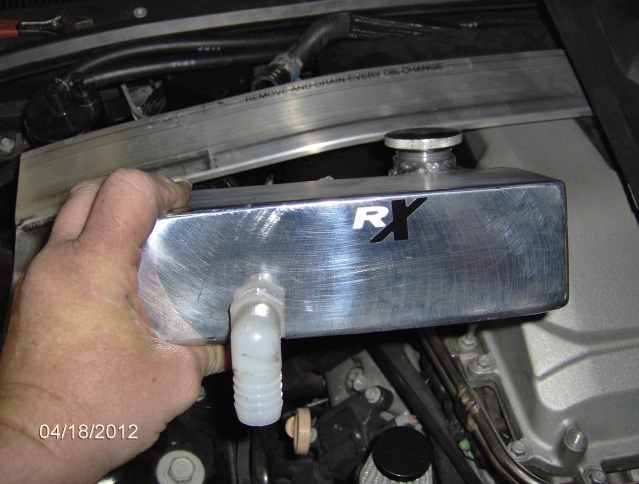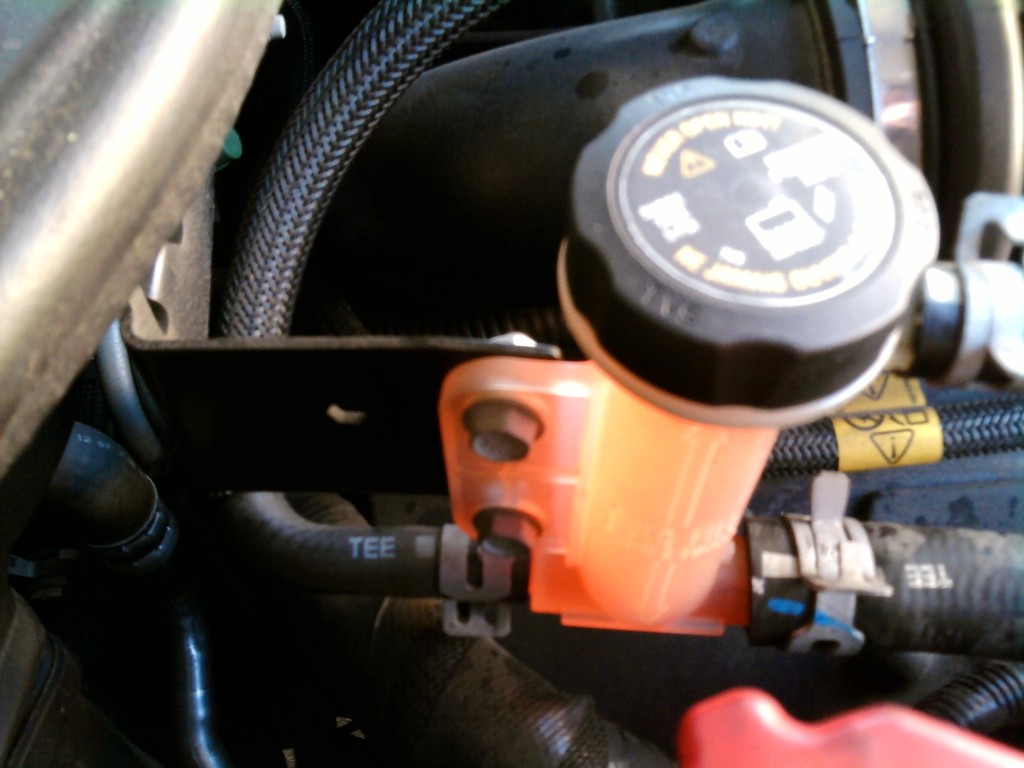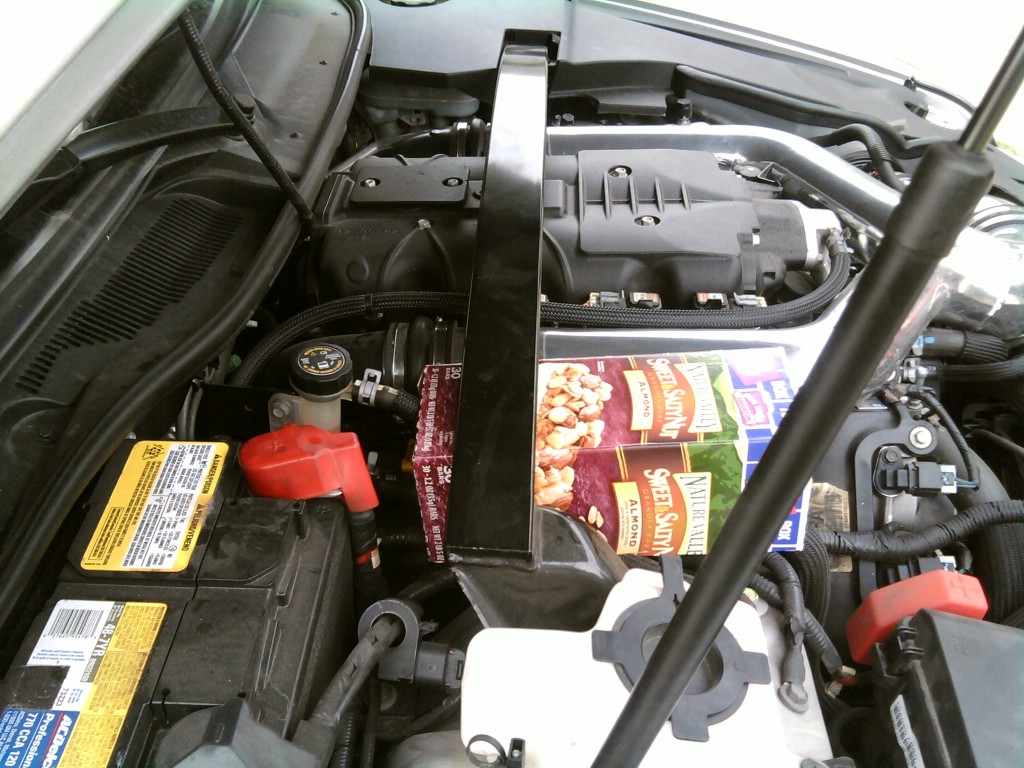I went back to rerun the test on the new Intercooler Heat Exchanger (Flexalite 45321) for confirmation of the original test, Initial IAT2 times with New HX – woops
Here was the test data from that test, suggesting the new HX is not as effective as the original:
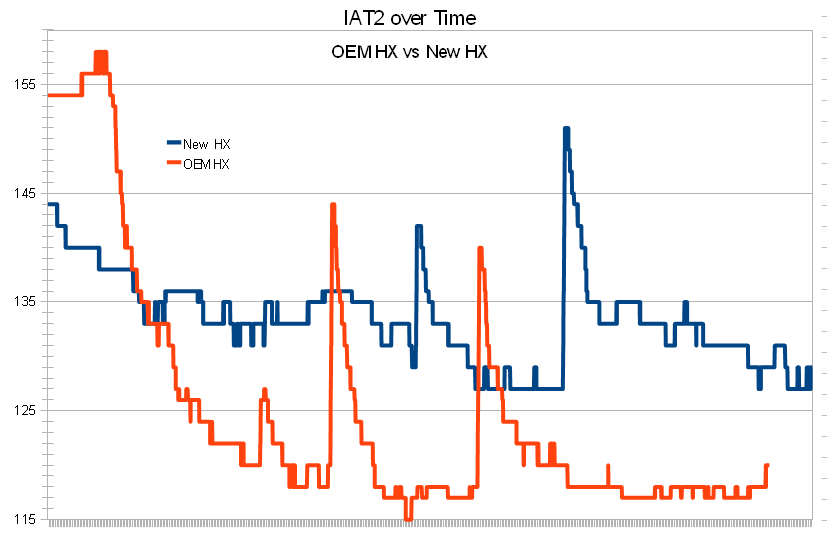
My method plan was to rerun the test this weekend after the car has had a week to work the air out of the intercooler loop.
Current configuration: Flexalite 45321 heat exchanger in the place of the OEM radiator type heat exchanger, no other heat exchanger in the circuit, no inline tank added.
What I found today was that the intercooler IAT2 temp never got below 131F, which is worse than the baseline above. Unfortunately, test1 today I fumbled the mouse at the end of the test and lost all the test data by accidentally closing VCM Scanner (doh). The STS-V was heat soaked before the test, starting at 156F for the IAT2, and was able to cool down to 131F and was still dropping slightly on highway runs. But it was not getting to a steady state of under 120F as the OEM did.
I also got the impression there is some interplay between A/C on or off and intercooler IAT2 temps although I am not clear why. My intuition is that A/C on would run the radiator fans and improve air flow and so lower IAT2, but on the ‘back’ of the loop where I normally do acceleration runs, I noted that when I turned off the A/C the IAT2s fell 5F quickly.
Now I’m not worried about performance runs for the STS-V when heat-soaked, but this does give us a way to test the efficiency of the intercooler cooling system, since it is presented with the greatest heat load.
After a break I’ll get back on to test2 and try to bring back a data stream this time! Stay tuned.
UPDATE
Okay, refueled and reran the test loop. I have added the retest new HX data to the previous data table. I have also added in some data lines from Jaimie’s STS-V. Jaime has an 07 STS-V with the 45321 HX in place of the OEM, a Frozen Boost front-mounted heat exchanger, and he has an aftermarket intercooler pump instead of the OEM pump.
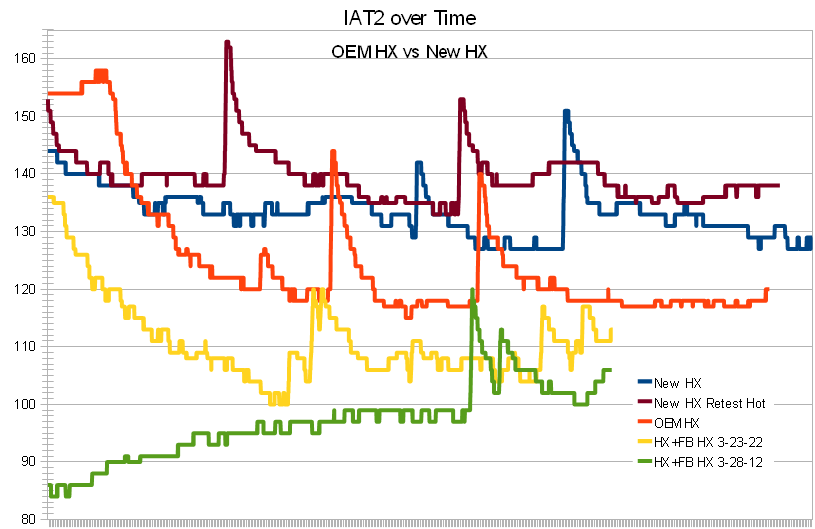
Retest of New HX appears to confirm previous test
My conclusion is that my config is still running hotter than I want. My plan is to return to the OEM intercooler heat exchanger, and add a new ZZP S3 front mounted heat exchanger under the bumper in series with the OEM hx. So, another install weekend then hopefully more data.
Also, I found on the retest that the area I was in led to a decrease in the IAT2, not turning the A/C off. The issue is that there is a zone of cooler air at the top of my test loop due to getting off the highway and I saw a drop in IAT2s in that area with the A/C left on during the retest.




